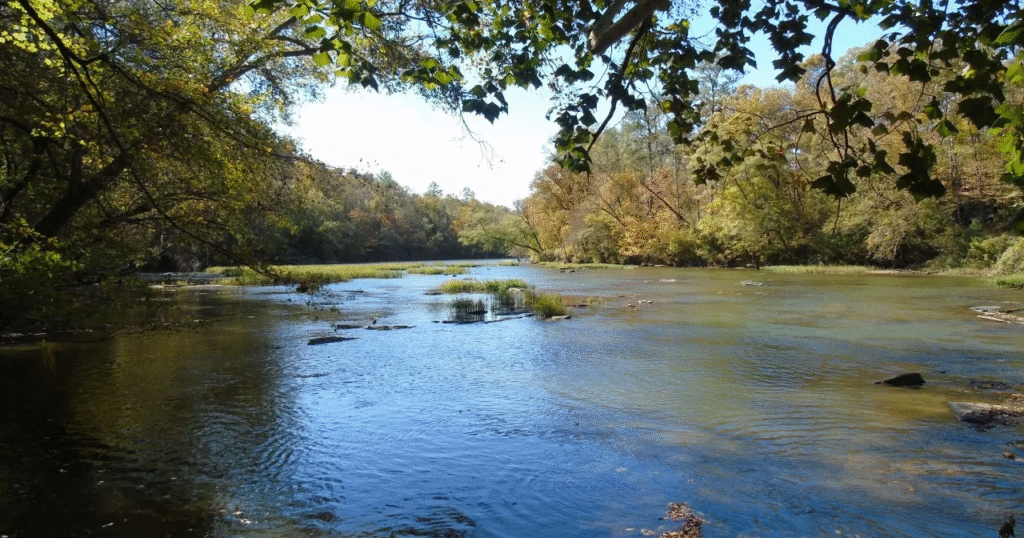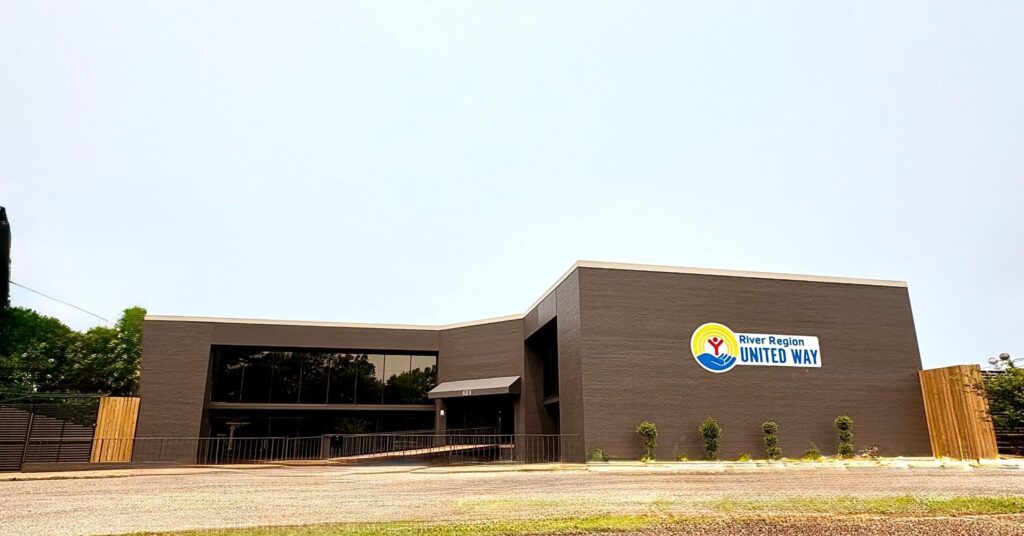The Conservation Fund preserves Alabama—here are 7 important projects
Reading time: 5 minutes

Since 1985, The Conservation Fund has saved 25,289 acres of land in Alabama. The Fund is responsible for preserving trails, forests, monuments and rivers, all with the goal of providing more access to nature and strengthening local economies. Check out 7 of The Fund’s most important projects in Alabama that have had a major impact on the state.
1. Pinhoti Trail

In 2020, Outside Magazine named the 335 mile Alabama/Georgia Pinhoti Trail as one of the best hikes to take on earth, and it’s all thanks to The Fund’s efforts. In the 1980s, The Fund worked to establish a trail corridor so the trail could reach Georgia’s state line, eventually connecting with the Appalachian Trail, one of the most famous trails in the US.
From there, they worked to acquire land rights throughout Alabama to build connecting trails on Horn and Rebecca Mountains in Talladega and Flagg Mountain in Sylacauga.
“The Conservation Fund has worked quietly to do things that have some real major impacts in Alabama.”
Michael Leonard, Senior Associate, The Conservation Fund
The Pinhoti Trail is an important piece of Alabama’s public lands whether you enjoy trail running or simple hikes. Thankfully, The Fund’s work (with numerous partners) has linked the Pinhoti Trail to other prominent trails, making it even easier to enjoy its beauty.
2. Pulpit Rock in Cheaha State Park

One of the most majestic vistas in Alabama is Pulpit Rock at Cheaha State Park, and there is an inholding right below it. Part of The Fund’s work is holding strategic acres of land and tracts until the US Forest Service can acquire them. One of The Fund’s first acquisitions also happens to be one of Alabama’s most beautiful views—Pulpit Rock in Cheaha State Park. The Fund acquired 40 acres at the west base of Pulpit Rock, so you can enjoy the breathtaking views at the top.
3. Sipsey Wilderness

In 2018, The Fund purchased a 40-acre holding of land within the Sipsey Wilderness of Bankhead National Forest that had gone up for sale. Then, The Fund held and managed it until the Forest Service could acquire the tract. The Sipsey Wilderness is the state’s oldest federally designated wilderness area, and now that all of the property is officially protected, the land will keep its biodiversity and wilderness character.
“I got involved in land conservation. By 1981, I was going to Washington and testified on behalf of the effort to create the Cheaha Wilderness and to expand the Sipsey Wilderness.”
Michael Leonard
4. Freedom Riders National Historic Monument

The Freedom Riders National Monument is a new national park that preserves one of the darkest moments in Alabama history and honors the memory of the Freedom Riders. On May 14, 1961, Freedom Riders entered the state of Alabama and were beaten while their Greyhound bus was firebombed.
“It is my hope that there will be a new movement to recognize the Freedom Riders and all of the people who fought for liberty. When I boarded that bus 56 years ago, I was in search of my American dream.”
Hank Thomas, Freedom Rider, Freedom Rider Monument Dedication
In 2017, The Fund worked with the National Park Foundation to acquire two tracts associated with the bus’s burning and a building across from the former bus station. Using the authority of the Antiquities Act, former President Obama established the park as a national monument.
5. Little River Canyon National Preserve

The Little River Canyon National Preserve is the deepest canyon east of Mississippi, but in the 70s and 80s, the canyon was a dumping ground for abandoned and stolen cars. After years of support from everyday citizens and organizations like the Birmingham Audubon Society, the canyon became a National Park.
Between 2005 and 2021, The Fund assisted with legislation that expanded the boundary of the Little River Canyon National Preserve to include the development along the east rim and a strip behind the development. The Conservation Fund focusing on preserving nature and strengthening local economies, and this preserve shows that impact.
Leonard told us that they bought lots on the rim. Why does that matter? Just imagine going to the Canyon and seeing houses on the top. Protecting these lots means the character of the canyon will stay in tact.
6. Historic CCC-constructed Tower and Cabin

Atop Flagg Mountain and in the midst of Weogufka State Forest, there’s a 55-foot-tall stone observation tower with a pavilion on one side and a “museum” on the other. The Fund is providing support to help restore and repair the tower and cabins. The tower and cabins are important to the area’s preservation, but they’re also a piece of history. The property was acquired in the 1930s and built by the CCC program, a federal program designed to provide jobs.
7. Key Cave National Wildlife Refuge

In the 1990s, The Fund worked with the US Fish and Wildlife Service to protect Key Cave, home to multiple endangered species including the Alabama cavefish and gray bats. Key Cave lies on Pickwick Lake in Florence.







